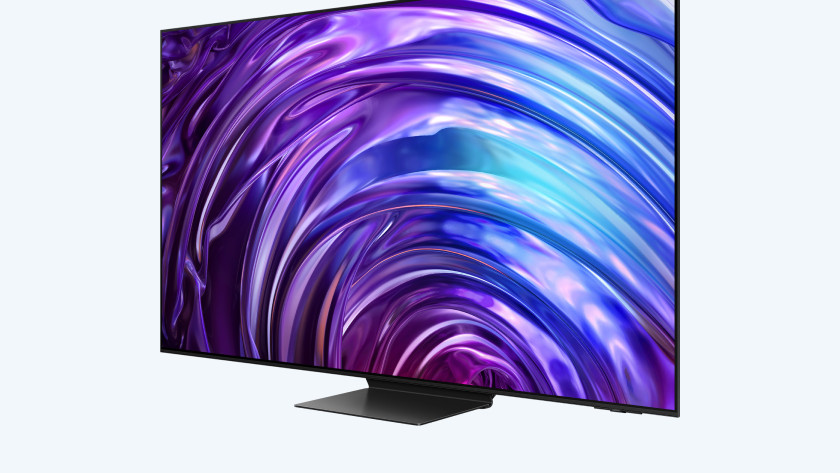
Samsung Neo QLED vs Samsung (QD) OLED
Compare the Samsung Neo QLED to the Samsung (QD) OLED
| Samsung Neo QLED | Samsung (QD-)OLED | |
|---|---|---|
| Strong contrast | No | Yes |
| Deep black levels | No | Yes |
| High brightness | Yes | No |
| Least reflection | Yes | No |
| Good viewing angle | No | Yes |
| Type of viewing situation | Daytime | At night |
Color representation and brightness

Neo QLED: high brightness and wide color representation
A Neo QLED television has Mini-LED local dimming. The small LED lights behind the screen provide a high brightness and a wide color palette. As a result, you see many details and clear differences between color tones. You'll notice the differences between light and dark shades of green in a field or the different colors of a sunset. The technology makes images vibrant and realistic.

(QD) OLED: higher brightness and wider color representation than OLED
Thanks to the (QD) OLED technology, these televisions provide a high brightness and wide color representation. That's because each pixel lights up or dims individually, which results in deep black tones and vibrant colors. This is even the case during bright scenes. That way, you can clearly see the contrast between the bright sun and shadows on the ground.
Contrast and black levels

Neo QLED: powerful contrast with occasional blooming
Because the thousands of LED lights behind a Neo QLED screen can light up and dim individually, a Neo QLED screen displays deep black images. As a result, the stars in a starry sky are extra bright against the dark background. The Quantum Dot layer on the screen filters light, so it can display the right colors precisely. In combination with Mini-LED local dimming and the deep black levels, this ensures a strong contrast. You might see a halo around a bright part of the image occasionally. This effect is called blooming. Thanks to Mini-LED, this isn't very often because the LED lights are controlled individually.

(QD) OLED: a powerful contrast without blooming
A (QD) OLED screen has millions of pixels that light up individually. They also turn off automatically, so the screen displays true black tones. The quantum dots on the screen turn light into color, which improves the color representation. (QD) OLED televisions display deeper black tones, but also a larger color volume. This provides a higher brightness and wider viewing angles.
Viewing situations

Neo QLED: watch TV during the day
Do you mostly watch TV during the day? Neo QLED televisions have a better anti-glare screen than (QD) OLED televisions. This makes these TVs better suitable for watching television during the day. You'll barely be bothered by reflections when your television is placed in front of a window. The intensity of the anti-glare screen of a Neo QLED television differs per model.

QD OLED: watch TV at night
If you only watch TV at night, we recommend a (QD) OLED television. These televisions have a higher brightness than Neo QLED televisions. In combination with a wider viewing angle, a (QD) OLED TV is very suitable for watching television at night.
Conclusion
The Neo QLED and the (QD) OLED technology differ in certain things. Neo QLED televisions display a higher brightness and wider color representation than (QD) OLED TVs thanks to the Mini-LED local dimming and the Quantum Dot layer. (QD) OLED televisions stand out in contrast and deep black levels, just like regular OLED TVs.
Stores
Do you want to see the difference between Neo QLED and QD OLED yourself? Visit one of our stores. Our colleagues are happy to give you personal advice. Click the button below for an overview of all Coolblue stores.


